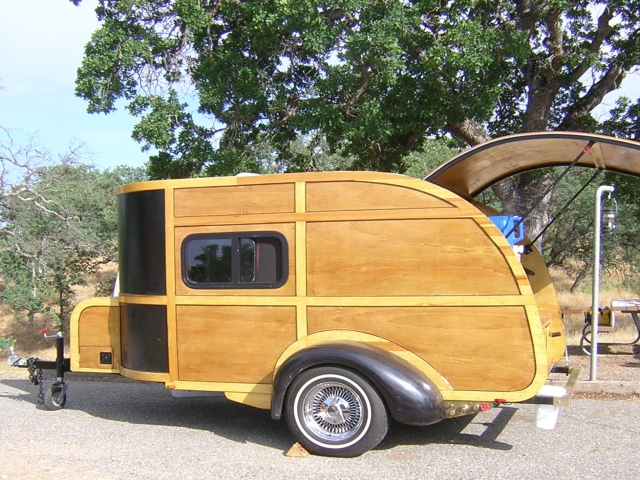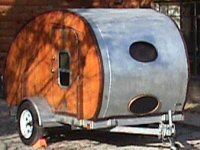You mentioned PMF and were asking if anyone has done it on Plywood? The answer is basically a "yes". The black portion of one pictured below was done with canvas glued to plywood and then painted with standard house paint. It's been holding up for probably close to 10 years. Of course, it's housed in a garage when not on the road. It belongs to one of our tearjerker members.

I would use TitebondII (or TitebondIII) straight from the bottle to get the best adhering and water protection. Once the glue and canvas is applied and has died, put two or three coats of house or marine paint over that. But then, I tend to overkill sometimes. FYI, the main difference between TitebondII and TitebondIII is that TitebondIII allows a little more drying time. Once Titebond is dry, it is said to be waterproof. Regardless of which one you use, before you apply the glue, take a damp sponge to the wood. (Barely damp,
not wet...you don't want to delaminate the plywood!) For some reason, that seems to make the glue work better. My theory is that it may open the "pores" in the wood so that it can accept the glue better or maybe the dampness draws the glue in. That may be similar to what the foamie builders are doing when they water down the glue. It may enable them to eliminate the damp sponging step plus give them more drying time; but, that's a guess. I don't know if anybody has really thought about that.
Gluing canvas on wood and following with paint was originally a method used when building boats many years ago, before fiberglass was invented.












 and I (bought stock in the manufacturer of staples) j/k
and I (bought stock in the manufacturer of staples) j/k 





 Everything you've completed is a check off, and your list gets smaller as you go.. it's looking awesome clam..
Everything you've completed is a check off, and your list gets smaller as you go.. it's looking awesome clam.. 